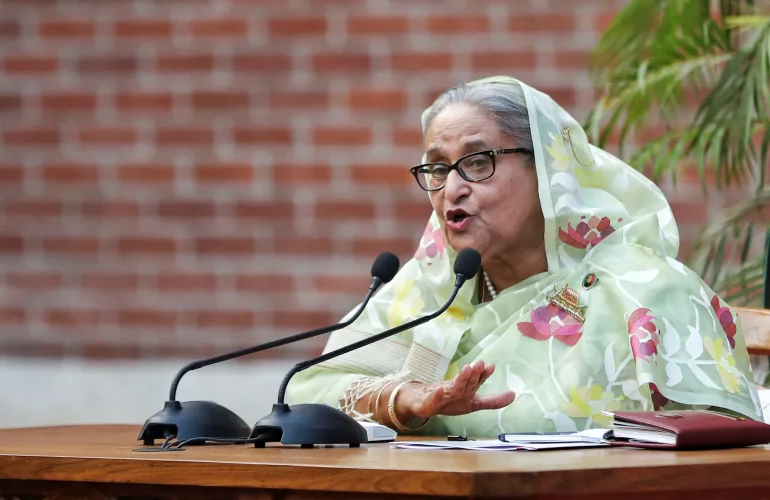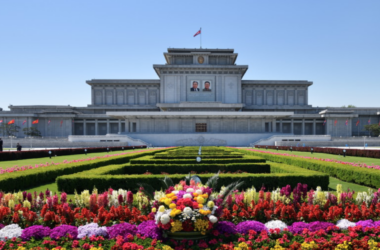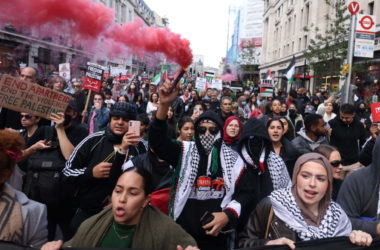After a remarkable 15-year tenure marked by significant economic growth and widespread controversy, Sheikh Hasina, the long-serving Prime Minister of Bangladesh, has resigned and fled the country. Her departure comes after weeks of deadly protests that shook the nation to its core. Here’s a look at the key events that defined her time in office:
December 29, 2008 – Return to Power
Sheikh Hasina and her Awami League party secure a resounding victory in the general elections, marking her return to power as prime minister after her first stint in 1996. This win sets the stage for a new era in Bangladeshi politics.
February 2009 – Bangladesh Rifles Revolt
A significant challenge to Hasina’s early days in office comes with the Bangladesh Rifles, a paramilitary force, revolting. The mutiny results in the deaths of over 74 people. Despite the chaos, Hasina’s government successfully restores order, solidifying her grip on power.
June 2011 – Constitutional Changes
The 15th amendment to the constitution is passed, removing the system of neutral caretaker governments that had previously overseen elections. This move sparks controversy, with the opposition arguing that the caretaker system is essential for ensuring free and fair elections.
February 2013 – Mass Protests in Shahbagh
Mass protests erupt in Shahbagh, Dhaka, with demonstrators calling for the death penalty for those who committed atrocities during the 1971 Bangladesh Liberation War. This period sees a rise in political activism and dissent.
October 2013 – Rana Plaza Tragedy
The collapse of the Rana Plaza building, which kills over 1,000 people, brings global attention to the unsafe conditions in Bangladesh’s garment industry. This industry is the backbone of the country’s economy, and the tragedy highlights significant flaws in worker safety regulations.
January 5, 2014 – Controversial Election Victory
The Awami League wins the general election, but the main opposition party boycotts the vote, leading to Hasina’s uncontested victory and a second straight term. This election is marred by allegations of unfair practices and political unrest.
January 2015 – Political Unrest
Political violence erupts, driven by the opposition Bangladesh Nationalist Party’s dissatisfaction with the 2014 election results. The unrest further polarizes the political landscape in Bangladesh.
December 30, 2018 – Allegations of Vote-Rigging
Hasina secures a third consecutive term in office after the Awami League wins the general election, amid widespread allegations of vote-rigging. The victory is seen by many as a blow to the democratic process in Bangladesh.
March 2020 – Economic Impact of COVID-19
The COVID-19 pandemic hits Bangladesh hard, leading to an economic downturn. A national lockdown exacerbates a cost of living crisis, putting additional strain on the population.
December 2021 – US Sanctions
The United States imposes sanctions on Bangladesh’s elite paramilitary force, the Rapid Action Battalion, accusing it of human rights abuses, including disappearances and extrajudicial killings. This move highlights the growing concerns over Hasina’s increasingly authoritarian rule.
2022 – Economic Growth and Wealth Disparities
Bangladesh reports a GDP growth of 7.2%, making it one of the fastest-growing economies globally. However, the benefits of this growth are unevenly distributed, with the wealthiest 10% controlling a significant portion of the nation’s income.
January 2024 – Fourth Term Amid Boycott
Hasina wins a fourth straight term in an election boycotted by the opposition, further entrenching her power but deepening the political divide in the country.
July 2024 – Student Protests and Government Crackdown
Student protests against government job quotas escalate into violence after a heavy-handed government response and attacks by groups linked to the ruling party. The unrest spreads, leading to nationwide protests.
August 4-5, 2024 – Deadly Protests and Resignation
The protests reach a deadly peak, with nearly 100 people killed in a single day, bringing the total death toll to almost 300. The violence and public outcry become untenable, leading to Hasina’s resignation and her decision to flee the country. Protesters storm the prime minister’s residence, marking a dramatic end to her 15-year rule.
Sheikh Hasina’s time in power will be remembered for both the economic progress and the authoritarian measures that defined her tenure. As Bangladesh faces an uncertain future, the end of Hasina’s reign opens a new chapter in the country’s political landscape.








